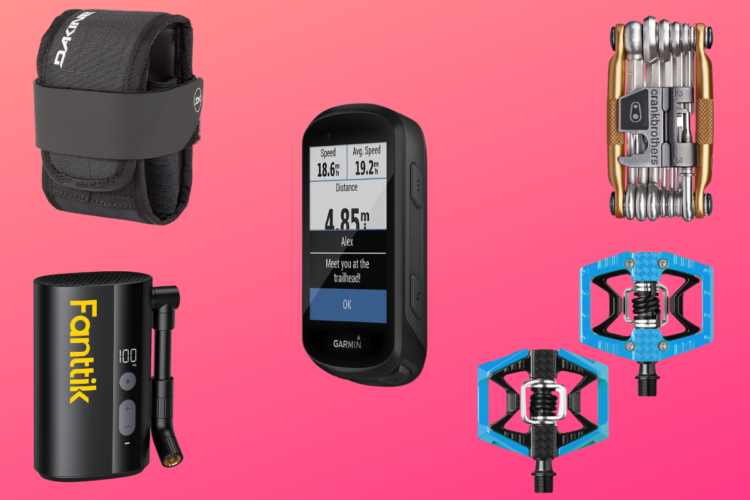
In mountain biking there are very few “classic” designs that haven’t been torn to shreds over the years as tech advances to produce bigger and better MTB components. Sometimes, though, designers and engineers hit upon a design so effective that it withstands the test of time with very few tweaks over the years. The Maxxis CrossMark mountain bike tire is proving itself to be one of those product designs.

On a recent group ride at Yellow River, 3 out of 7 of us were riding CrossMark tires which isn’t too surprising given the versatility of these skins. The CrossMark features a directional tire tread with ramped intermediate knobs that can be ridden front or rear (or both), depending on conditions. As a front tire the CrossMark is tough to beat but if you’re riding in loose to muddy conditions you may want a rear tire with a little more bite (the Maxxis Ardent is a good choice). On hardpack trails the CrossMark rolls fast and efficient thanks to tightly-spaced center knobs while the raised and slightly wider spaced side knobs bite well in corners.
At 605g each, the CrossMark 29 is a fairly light tire, thanks in part to the lightweight 60 TPI casing. For those who aren’t familiar, TPI stands for “threads per inch” where the threads are part of the cloth reinforcement embedded into the tire rubber. A higher TPI allows for thinner tire walls which makes the tire more supple and lighter but also weakens the sidewalls, making them more likely to be damaged by rocks and sticks on the trail. At 60 TPI the CrossMark 29 is a durable tire that will stand up to a lot of abuse. For weight weenies with 26″-wheel bikes, the CrossMark also comes in a 120 TPI version for a roughly 10% weight savings.
Many tires claim to be low rolling resistance and sadly there isn’t a widely used measurement of rolling resistance out there (though in theory a test should be easy enough to develop). For me the best test is taking a mountain bike tire out on the road and listening to it hum. A loud tire on the road signals a tire that’s sucking energy while a relatively quiet one signals good efficiency. The CrossMark 29 passed the road test with flying colors and felt smooth with very little noticeable vibration on smooth surfaces.

Mud clearing ability is important for any XC tire and even though the CrossMark 29 isn’t designed for muddy conditions, the tire does a decent job at shedding the big stuff thanks to the moderate-to-shallow tread depth. The tiny cross pattern in the center does make it tough to get the tire completely clean and in my tests even miles of pavement couldn’t loose some of the stickiest bits.
The CrossMark 29 is faithful big wheel extension of the venerated CrossMark design and is a versatile tire any XC rider can appreciate. Blending high rolling efficiency with decent cornering control, the CrossMark is a big-wheel-friendly tire that is a solid choice for a wide variety of conditions. Get the CrossMark and you’ll always be in good company when you’re out on the trail.
Thanks to the folks at Maxxis for providing these tires for review.




















5 Comments
Feb 1, 2010
Feb 2, 2010
Feb 3, 2010
Feb 2, 2010
Yeah, the SMB 8 has pretty thin sidewalls. Several pinholes that sealant has to seal up to make them work tubeless. They do feel very supple though. I didn't expect to like them when I bought the first one...but they're surprisingly grippy, and one of the lightest tires around to boot. I've been using them for a while now though, about a year front and rear on my FS 26" bike, and a few months as a rear on the rigid 29er. If you look closely, the side knobs are just a bit taller than the center knobs, but only 2 or 3mm.
I just wish they made them in a 2.4!
Feb 2, 2010
It's also interesting to note the Small Block 8 is a 120 TPI tire which makes them more susceptible to sidewall damage. At roughly the same weight at the CrossMark 29, the thinner walls don't seem to be much of an advantage (though the tire will feel more supple). The widest Small Block 8 29er tire is also 2.10.